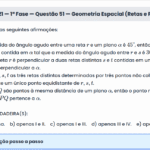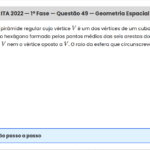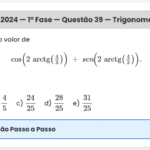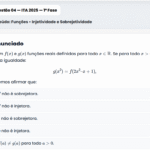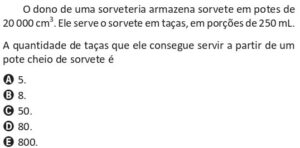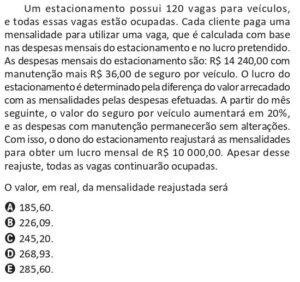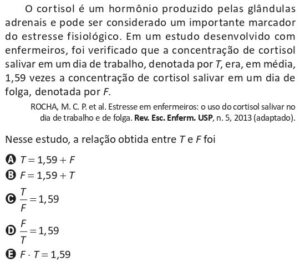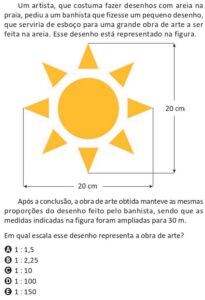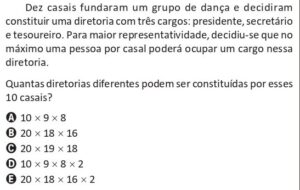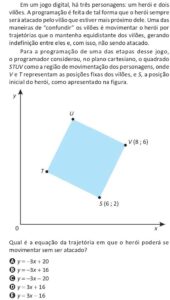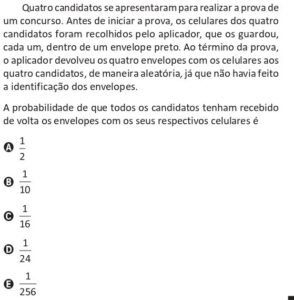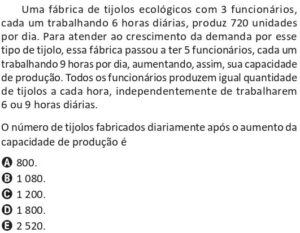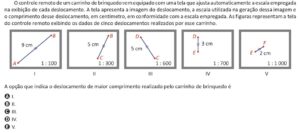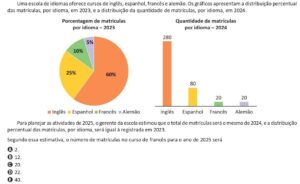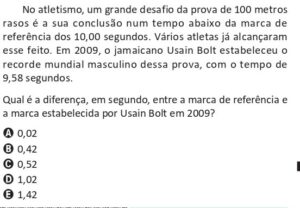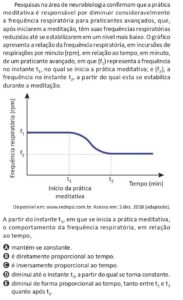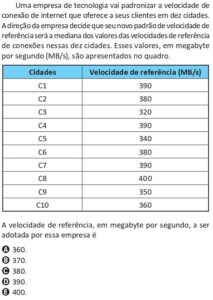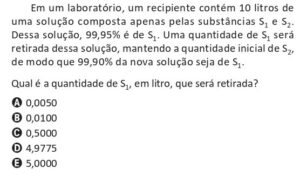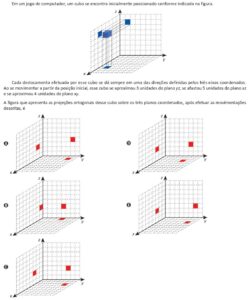Enunciado:
Determine o conjunto solução da inequação:
\[
\log_{2^{-x}}\!\left( -\sqrt[3]{\,x^2 + 2x – 3\,} \right) > \log_{2^{-x}}\!\left( \sqrt[3]{3} \right).
\]
Resolução
1) Condição de existência (argumentos positivos):
\[ -\sqrt[3]{\,x^2+2x-3\,} > 0 \ \Longleftrightarrow\ \sqrt[3]{\,x^2+2x-3\,} < 0 \ \Longleftrightarrow\ x^2+2x-3 < 0 \] \[ \Longleftrightarrow\ -3 < x < 1, \] e a base \(2^{-x}\) deve ser positiva e diferente de 1, o que ocorre para \(x \neq 0\). Logo: \[ \boxed{-3 < x < 1,\quad x \neq 0}. \]
2) Caso A – \(x > 0\) (logo \(0 < 2^{-x} < 1\)): a função logarítmica é decrescente, portanto a desigualdade se inverte:
\[ -\sqrt[3]{\,x^2 + 2x – 3\,} < \sqrt[3]{3} \ \Longleftrightarrow\ \sqrt[3]{\,x^2 + 2x - 3\,} > -\sqrt[3]{3} \] \[ \Longleftrightarrow\ x^2 + 2x – 3 > -3 \ \Longleftrightarrow\ x^2 + 2x > 0 \ \Longleftrightarrow\ x(x+2) > 0. \] Como \(x>0\), resulta \(x > 0\) ou \(x < -2\) (descartado pela hipótese). Assim, para \(0 < x < 1\) todos os valores são aceitos.
3) Caso B – \(x < 0\) (logo \(2^{-x} > 1\)): a função logarítmica é crescente, portanto a desigualdade mantém o sentido:
\[ -\sqrt[3]{\,x^2 + 2x – 3\,} > \sqrt[3]{3} \ \Longleftrightarrow\ \sqrt[3]{\,x^2 + 2x – 3\,} < -\sqrt[3]{3} \] \[ \Longleftrightarrow\ x^2 + 2x - 3 < -3 \ \Longleftrightarrow\ x^2 + 2x < 0 \ \Longleftrightarrow\ x(x+2) < 0. \] Isso implica \(-2 < x < 0\). Mas, pelo domínio, temos ainda \(-3 < x < 1\) e \(x \neq 0\), logo o intervalo válido é \((-2,0)\).
4) Conclusão: Unindo os casos válidos:
\[ S = (-2,0) \ \cup\ (0,1). \]
Resposta: \(\boxed{(-2,0) \cup (0,1)}\)


